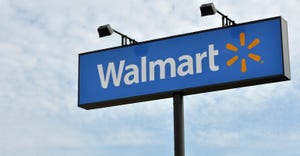Will Flower of Winters Bros. Waste Systems: The State of Rail Waste is On Track
Trail derailments have garnered national attention following the February 3 accident in East Palestine, Ohio and mobilized calls for stricter regulation of U.S. railways. Between 1990 and 2021, the Bureau of Transportation reports a total of 54,539 derailments occurred or just more than 1,700 per year.
Trail derailments have garnered national attention following the February 3 accident in East Palestine, Ohio and mobilized calls for stricter regulation of U.S. railways. Between 1990 and 2021, the Bureau of Transportation reports a total of 54,539 derailments occurred or just more than 1,700 per year.
Still, rail boasts a lower environmental impact and is a safe, critical mode of transportation. The Federal Railroad Administration shows train accident and hazmat accident rates have declined 42 percent and 71 percent, respectively, since 2000. While human error was the top cause of rail accidents in 2022, equipment/track failure has led the list in prior years.
Waste360 recently discussed the state of rail waste of Will Flower, senior vice president of Corporate and Public Affairs, Winters Bros. Waste Systems.
Flower says the U.S. rail system is "healthy and well positioned for a bright future." U.S. rail infrastructure consists of hundreds of individual railroads and 140,000 miles of freight track that connect directly to facilities and sites. However, there are both challenges and benefits associated with this mode of transportation.
"Rail does require a large capital contribution to build the infrastructure and to procure rail cars," he comments. "Additionally, rail transportation is highly regulated. The transportation of waste material and other aspects of rail is subject to strict regulations. All rail transport companies are required to comply with these regulations to ensure the safety and security of the materials being transported."
The ramifications of the East Palestine disaster are likely to be present on the legislative front. Rail transportation is, comparatively speaking, similar to the waste and recycling industry in terms of legislation, regulation and policy. Flower expects a focus on rail safety going forward.
"We hope that in addition to any legislation, Congress continues to fund important industry safety efforts from the traditional sources, allowing USDOT grant programs to fund critical projects that will improve network fluidity, and advance rail safety, and sustainability," he says.
Rail transport provides one of the safest modes of transportation for hazardous and other waste. Flower states that railroads are built and regulated to minimize the risks of accidents.
"Train cars are designed for the transportation of hazardous materials in specialized containers that are built to withstand the stresses of transport," he comments. "In terms of efficiency, railroads can transport large volumes of materials over long distances in a single trip, reducing the number of trips required and the associated costs and emissions.
This mode of transportation also is more cost-effective over long distances, especially for large volumes of municipal solid waste and construction and demolition waste. Finally, railroads often are constructed in proximity of solid waste disposal sites, providing accessibility directly to a facility or site.
"On the beneficial side, rail transport is highly dependable and has a lower environmental impact than other modes of transportation, such as trucking," he adds. "Trains produce fewer emissions per ton of freight transported, reducing the overall carbon footprint of the transportation process."
Freight railroads account for only 0.6 percent of U.S. greenhouse gas emissions. Furthermore, Flower points out that moving freight by rail reduces highway congestion, lowering idling emissions and fossil fuel consumption, a 75 percent reduction in greenhouse gases versus truck fleets.
Flower points to the supply chain efficiencies Winters Bros Waste Systems has achieved following the purchase of Brookhaven Rail, a Class III Short-line railroad, in 2020. Rail transportation services are provided through a network of operations including multiple hauling locations, seven recycling centers and 11 transfer stations including two solid waste rail transfer facilities, according to the company.
"Everyone realizes the need for a substantial increase in transportation capacity to manage deliveries to and shipments from Long Island," Flower says. "Moreover, just recently, New York State’s Climate Action Council recommended the wider utilization and expansion of transportation of freight via rail in stating the 'state should work with federal partners to improve the reliability of intercity passenger rail service and strengthen the freight rail system. These improvements will provide New Yorkers with additional low-carbon options for longer-distance travel and improve the environmental sustainability of the goods movement system.'”
Editor's Note: Hear more from Will Flower during the Waste Expo 2023 session, Waste By Rail: Best Practices for Staying on the Right Track
About the Author(s)
You May Also Like




